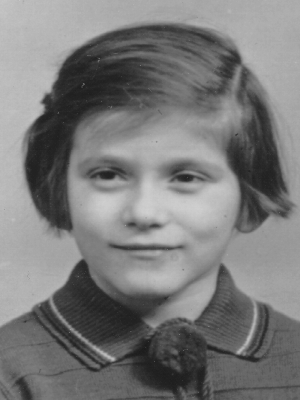
Ruth was the only child of Berta and Hugo Moses. She lived in Frankfurt am Main, one of Europe's most important Jewish centers. Frankfurt's Jewish community participated in all aspects of the city's social and cultural life. Jewish citizens played an important role in the city's commerce and industry. In 1933, the city even had a Jewish mayor, Ludwig Landmann.
Following the Nazi rise to power on January 30, 1933, Frankfurt's Jews were subjected to physical assaults and to a general boycott of Jewish businesses, even before any official laws were enacted. All public institutions dismissed Jews from their staffs - hospitals, courts, schools, universities, and institutions of culture and the arts. Economic conditions grew even worse after the passage of the "Nuremberg Laws" in 1935. Ruth was born in that year.
After October 1941, Jews were forbidden to leave Germany. The Nazis began rounding them up and sending them to ghettos in eastern Europe. Six year-old Ruth and her parents were deported to a sealed-off ghetto in the city of Riga, the capital of Latvia.
The Riga ghetto's previous residents, 30,000 local Jews, were murdered by the Nazis in November 1941, to make room for the newly arriving German Jews. Conditions in the ghetto were horrendous. The ghetto was plagued with little food, poor sanitation, and horrible overcrowding. Thousands of people died of starvation, disease, and exposure.
The ghetto was eventually emptied of its inhabitants. Most of the inhabitants were gassed to death in transport vans or were shot. Others were sent to labor camps, where they were worked to death. By December 1943, there were no Jews left in the Riga ghetto.
Nothing is known about Ruth's fate after she was sent to Riga. No trace has ever been found.

